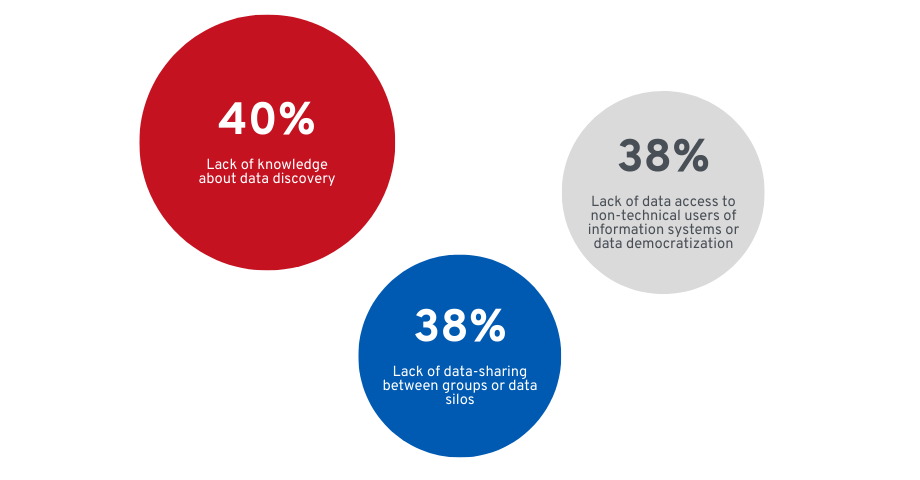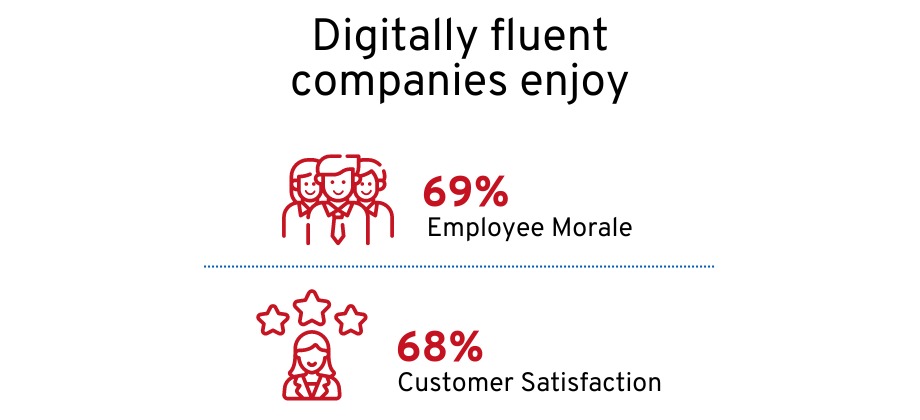With the amount of data expected to more than double its current level five years from now, forward-looking businesses are already taking steps to examine their organizations’ data literacy. The term refers to the skill that involves the ability to understand, work with, analyze, and even reason with data.
Data leaders say that the lack of knowledge about what existing data the company has and who has it (data discovery) is their top challenge (40%). The lack of data-sharing between groups or data silos (38%) and the lack of data access to non-technical users of information systems or data democratization (38%) are the other leading hurdles.
The Value of Data Literacy
Data literacy improves and speeds up decision-making, allowing you to better align with your customers and edge out your competitors. In fact, companies that harness data, analytics, and technology saw a 15% to 25% growth in their EBITDA. Ninety percent of their sales teams reach their quotas. Moreover, “digitally fluent” companies enjoy high employee morale (69%) and customer satisfaction (68%).
Assessing Your Company’s Data Literacy
Answering these questions can help you determine how data literate your business is:
- What percentage of your workforce can interpret statistical operations like correlations and averages?
- How comfortable are your employees working with data? Do they have any frustrations? What factors are causing them?
- Do they currently have data tools to help meet your business objectives? How helpful are these tools?
- How many of your managers can report and explain the output of your work systems or build a business case using accurate and relevant numbers?
Steps for Creating a Data Literacy Program
1. Develop a data literacy vision
To come up with such a data roadmap, ask yourself: In what areas of our business can data drive value? What level of data literacy does senior management want the organization to achieve? Are there roles that need higher-level data fluency more than others? Your answers will help set goals and success indicators.


A data literacy roadmap will give your team this assurance: Data is not about adding more to your plate. Data is about making sure you have the right things on your plate.
2. Involve leaders
Your company’s top executives are the best champions for modeling and promoting the benefits of data literacy. Their buy-in will hasten the approval of your data initiative and its enthusiastic adoption among personnel.


Executive management is more likely to invest in data initiatives when they understand the 'why.'
3. Know your staff’s existing skillset
Get to know your workforce’s current skills by having them take a data literacy assessment. The managerial team can later agree on the level of proficiency needed for different job types.


There are free or sample data literacy tests online. But you may need external help to get a clearer view of your current situation.
4. Use common language
Ensure that one department’s data-related jargon—marketing, sales, or IT—is known by the rest. You can produce materials that explain how these concepts are relevant across all departments.


You can come up with a common language dictionary of terms used internally among staff and externally by the board. This results in clear and consistent communication that promotes transparency and accountability.
5. Create learning and development plans
Tailor your upskilling program based on your workforce’s needs. The modules may start with a standardized course on basic data concepts before focusing on big data tools that employees can apply in their day-to-day jobs.


There’s no one-size-fits-all for data readiness. Your chief digital officer and HR team can work hand in hand in crafting contextual training.
6. Remember that everyone has a unique learning curve
Everyone has their own preferences when it comes to learning—some pick up speed through hands-on practice while others need extended self-learning time. Gather feedback and encourage questions along the way.


Every student can learn. Just not on the same day or in the same way.
7. Open opportunities and offer rewards for data-literacy applications
Make your workplace open to curiosity and ideas that can practice new learning. You can reward managers with larger budgets or faster project proposals for their initiatives that reduced spending or raised revenues.


One basic project to try after training is using data visualizations (charts and graphs) for an internal report or team discussion. Team building events and conference attendance can also help sustain the momentum.
To achieve success with the seven-step process, assign a data leader or data team to guide the efforts. Doing so will standardize processes and ease communication among departments.
Contact us for more information on how Intellihance can support your business needs.




